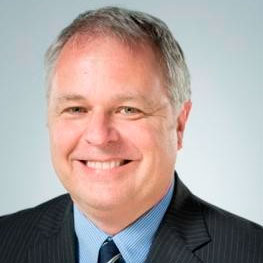Effective collaboration with diverse stakeholders
This is the first in a three-part series from our NFP Council on the importance of collaboration in organizations with diverse stakeholders. Parts one and two are case studies. Part three gleans insights and lessons learned from these studies.
The Canadian National Exhibition (CNE), Canada’s largest annual event, has been operating on the shore of Lake Ontario at Exhibition Place since 1879. This iconic brand has a rich history steeped in community and family traditions, and continues to build new relationships with newcomers and diverse audiences. For decades the CNE has been an engaged and respectful partner of city, provincial and federal governments.
This brand has several distinguishing features:
- It is run by a non-profit organization on city-owned property,
- It sits adjacent to large residential neighbourhoods, and attracts enormous crowds to the area,
- It has limited resources and needs extensive cooperation from the private sector,
- It occupies space that is in the control of for-profit, private enterprise,
- It does not receive any public funding, and
- It is expected to thrill and entertain the public annually.
The annual event is a key economic driver both for the City of Toronto and the Province of Ontario, and provides valued entertainment for audiences in excess of 1.5 million during its annual 18-day run. This is a complicated scenario, with highly diverse stakeholders, including all levels of government, property managers, private corporations, entertainers, vendors, security providers and the general public.
Effective collaboration among these diverse stakeholders has become the hallmark of the organization.
The experience of community consultation
The CNE has always attempted to offer programming that is accessible to broad audiences. It had a longstanding tradition of offering free admission to people living with physical disabilities. Specifically, anyone using a wheelchair or crutches was escorted past the turnstiles free-of-charge. However, free admission was not offered to people living with other types of disabilities.
In recent years, CNE leadership recognized that it needed to review and update its practices. CNE leadership considered broadening free access to all persons with disabilities, both visible and invisible, as identified by the Accessibility for Ontarians with Disabilities Act (AODA). After some discussions about the challenges of this approach, and recognizing that other city attractions such as the Toronto Zoo and the ROM had adopted a policy for all patrons to pay full admission, the CNE announced it would follow suit.
When the policy was announced, there was significant and unexpected media and public backlash, forcing CNE management to withdraw the proposed change. This began a year-long process to reflect and engage with community stakeholders to reconsider its position.
An advisory committee was established consisting of representatives from across the spectrum of persons with disabilities including non-profit associations, government and individuals. This group met diligently for more than one year to inform and assist CNE management with the development of a new policy that was inclusive and fair. The result was a recommendation to reinstate the proposed policy that had earlier been suspended; all patrons would pay full admission to the CNE, however those individuals providing direct, personal care for an individual with a disability, would be admitted for free.
This announcement was well-received by the media and the public. Consultation with stakeholders had led to a transparent and more meaningful policy decision, resulting in overall community support.
An unexpected outcome of this review was a significant shift in attitudes and corporate culture within the CNE. The organization had gained a new level of awareness and understanding of inclusivity, resulting in a review of the entire guest experience: changes were made to service models, attractions were reimagined, and improvements were made to facilitate pedestrian movement throughout the grounds. Staff training became more frequent, and a new inclusionary hiring strategy was rolled out. A commitment to champion the rights of persons with disabilities became the mantra of the organization. The very culture of the CNE had shifted.
Evaluating customer experience
The relationship between the CNE and its customers is a key element of its business strategy, to ensure the event remains aligned with community expectations. It has been conducting user experience surveys for years, however, participation rates have fallen significantly. To continue capturing these valuable insights, the CNE created a user panel called the CNExperts, consisting of several hundred patrons who contribute to ongoing research studies to improve the event each year.
The CNExperts panel is the culmination of attempts to engage with community stakeholders over many years. Due to the nature of the CNE brand and its inherent value within local and family culture, there is a strong affection for what it represents.
A few years ago, when the province and the city considered building a major casino at Exhibition Place, the physical home of the CNE, the CNE was able to harness the opinion of the local community – the early stages of the CNExperts panel – to influence public opinion. Ultimately, the casino concept was abandoned, and the CNE has thrived as a result. If not for the ability of the CNE to harness the power of its supporters, the story may have ended differently.
Stay tuned for the next blog in the series, an APTN case study.




































